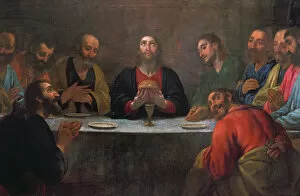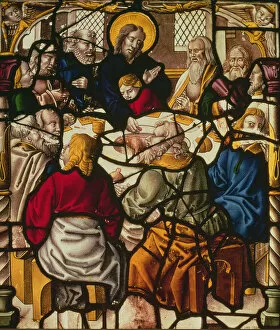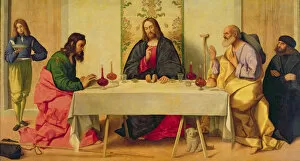Breaking Bread Collection
"Breaking Bread: A Symbolic Connection Through Time and Art" Throughout history, the act has held immense significance, transcending time and culture
All Professionally Made to Order for Quick Shipping
"Breaking Bread: A Symbolic Connection Through Time and Art" Throughout history, the act has held immense significance, transcending time and culture. From biblical accounts to medieval manuscripts and Renaissance masterpieces, this simple gesture carries profound meaning. In Leonardo da Vinci's iconic masterpiece "The Last Supper, " we witness Jesus breaking bread with his disciples for the final time. The oil on canvas painting immortalizes this pivotal moment in Christian history, emphasizing unity and sacrifice. Similarly, Ms Hunter 229 f. 12r depicts Christ's Breaking of Bread at Emmaus in exquisite detail. This pen & ink and tempera on vellum artwork from the Hunterian Psalter transports us back to the twelfth century, capturing a sacred encounter between Christ and his followers. Delving further into religious artistry, a facsimile of a fifteenth-century missal ornamented with paintings showcases The Jews Passover. This vivid depiction reminds us of the ancient tradition surrounding Passover celebrations while highlighting the importance of communal meals throughout history. Moving beyond traditional religious narratives, artists have continued to explore themes of fellowship through their works. "Supper at Emmaus, " an oil on canvas by an unknown artist, portrays another instance where Jesus breaks bread with his disciples after his resurrection – a powerful symbol of hope and renewal. Even stained glass windows bear witness to this timeless motif. A panel depicting The Last Supper captures rays of colored light illuminating Jesus as he shares one last meal with his closest companions before facing crucifixion. As we delve deeper into artistic interpretations spanning centuries, "Christ at Emmaus" captivates viewers with its emotional intensity conveyed through oil on panel technique. Here again, we see Jesus revealing himself through the simple act – a transformative moment that forever changed those present. "The Institution of the Eucharist, " rendered in ink wash circa 1603 by an anonymous artist reflects upon Jesus breaking bread and offering his disciples the cup.






















